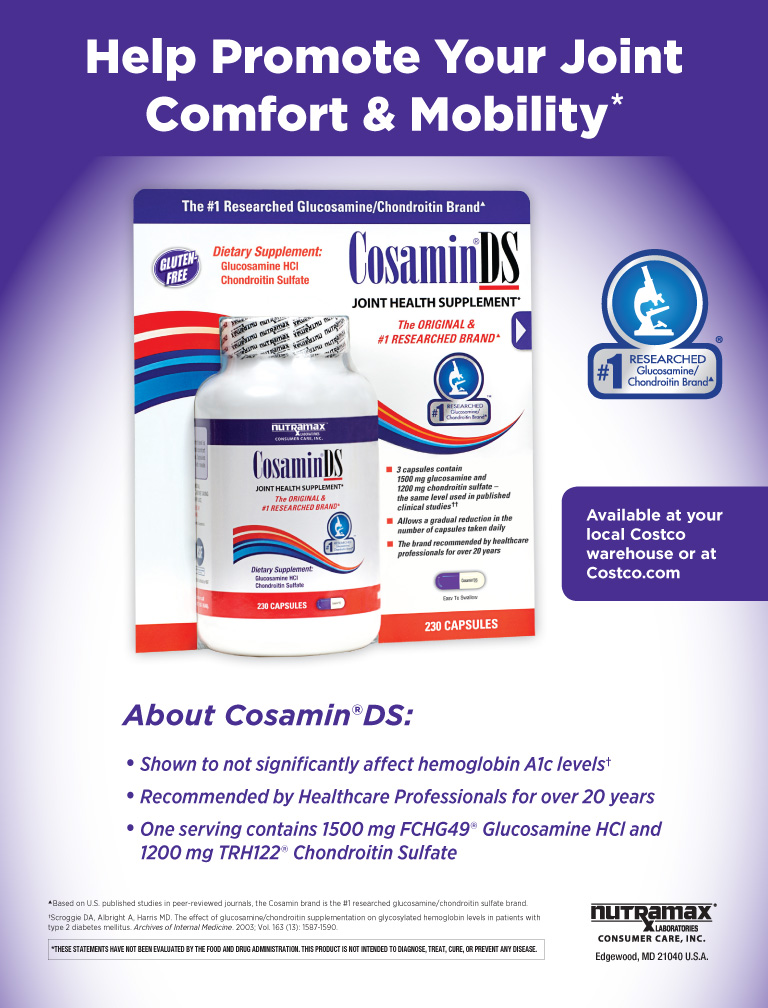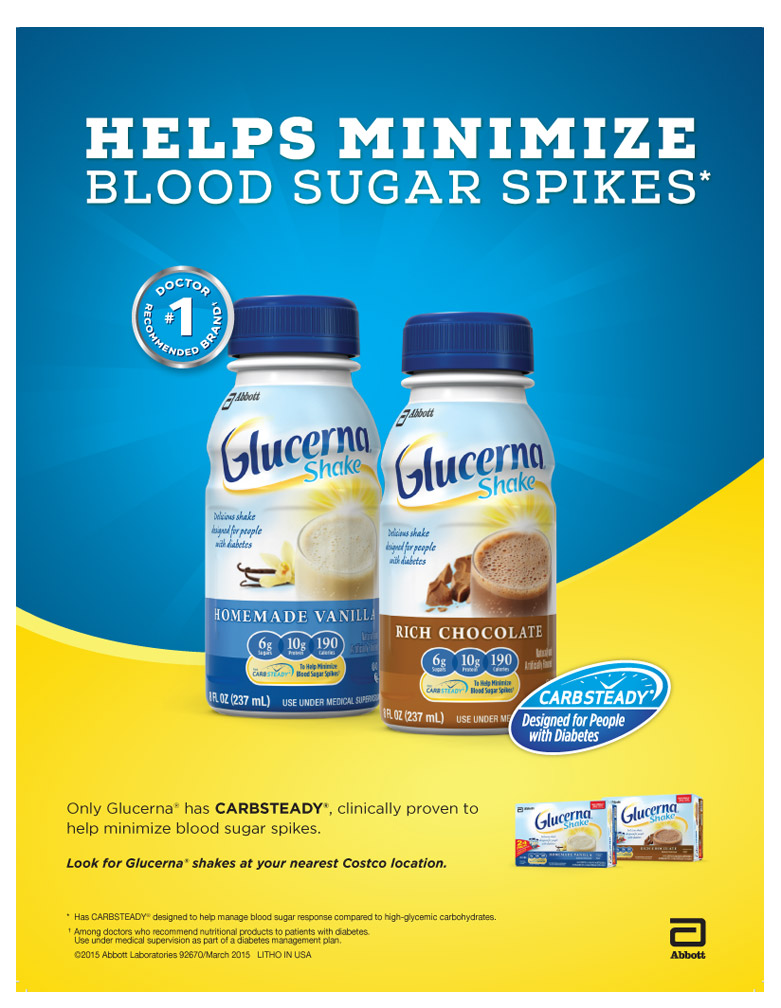
When it comes to controlling your blood glucose, you have probably researched the impact of everything from food, to exercise, to weight control. But have you looked into how spices may impact it? Cinnamon is a spice that doesn’t just add great flavor to foods; it may help to lower blood glucose as well. The best benefit it offers is that it’s all-natural and considered safe for most people with diabetes. Does it sound too good to be true? In Medieval times, cinnamon was used for medicinal purposes thanks to its high antioxidant properties. Research now shows us that it may be a powerful player in the fight against diabetes. Cinnamon may help to lower blood glucose levels by decreasing insulin resistance. When your cells become resistant to insulin, the glucose-lowering hormone in your body, they do not allow insulin to carry glucose into your cells. This results in glucose remaining in your bloodstream and rising over time, eventually leading to diabetes. Both whole cinnamon and extracted cinnamon have been shown to lower blood glucose levels. Cinnamon has also been shown to help reduce unhealthy LDL cholesterol levels and blood pressure, both of which are conditions that can increase your risk of heart disease. One down side is that everything that Mother Nature puts into the cinnamon plant also ends up in the finished product. This includes water soluble as well as fat soluble compounds. Our bodies have no problem processing water soluble compounds, but fat soluble compounds tend to be stubborn for our bodies to digest. When choosing a form of cinnamon, we suggest you look for a water extracted concentrate without the fat soluble compounds. Water extracted forms can maximize the health benefits, while minimizing the risks of fat soluble buildup. The extraction process allows the beneficial water soluble components of cinnamon to stay, providing you with the same health benefits of whole cinnamon in a much smaller portion. When looking for water extracted cinnamon, it’s important that you read the label and look specifically for the term “water extracted.” Because it is more concentrated, you can take fewer capsules to get all the health benefits of cinnamon. This may be more practical than trying to incorporate large amounts of whole cinnamon into your meal plan. CinSulin water-extracted cinnamon is backed by five human clinical studies, all of which are double blind, peer reviewed and published. In addition, UC Davis completed a meta analysis to validate the results of these human clinical studies. They found support that water extracted cinnamon lowered fasting blood glucose an average of 10%. If you are considering using cinnamon to help control blood glucose levels, make sure you discuss this with your certified diabetes educator or other healthcare provider. If you use cinnamon in combination with other medicines or supplements that also lower glucose levels, you may increase your risk of hypoglycemia. Your healthcare provider can work with you to make sure you incorporate cinnamon into your diabetes treatment plan in a way that works best for you. By Erin Palinski-Wade RD, LDN, CDE
The post How Water Extracted Cinnamon Can Improve Your Blood Glucose Control appeared first on Summer 2015 Issue | CDiabetes Online Magazine.
]]>
When it comes to controlling your blood glucose, you have probably researched the impact of everything from food, to exercise, to weight control. But have you looked into how spices may impact it? Cinnamon is a spice that doesn’t just add great flavor to foods; it may help to lower blood glucose as well. The best benefit it offers is that it’s all-natural and considered safe for most people with diabetes.
Does it sound too good to be true? In Medieval times, cinnamon was used for medicinal purposes thanks to its high antioxidant properties. Research now shows us that it may be a powerful player in the fight against diabetes.
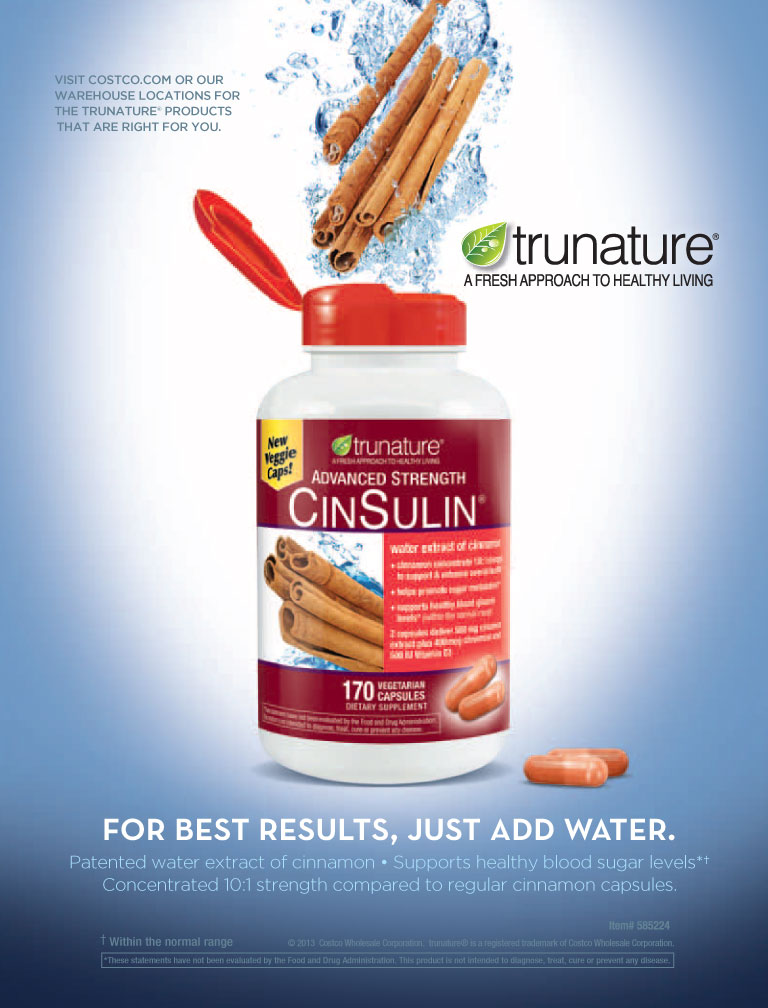 Cinnamon may help to lower blood glucose levels by decreasing insulin resistance. When your cells become resistant to insulin, the glucose-lowering hormone in your body, they do not allow insulin to carry glucose into your cells. This results in glucose remaining in your bloodstream and rising over time, eventually leading to diabetes. Both whole cinnamon and extracted cinnamon have been shown to lower blood glucose levels. Cinnamon has also been shown to help reduce unhealthy LDL cholesterol levels and blood pressure, both of which are conditions that can increase your risk of heart disease.
Cinnamon may help to lower blood glucose levels by decreasing insulin resistance. When your cells become resistant to insulin, the glucose-lowering hormone in your body, they do not allow insulin to carry glucose into your cells. This results in glucose remaining in your bloodstream and rising over time, eventually leading to diabetes. Both whole cinnamon and extracted cinnamon have been shown to lower blood glucose levels. Cinnamon has also been shown to help reduce unhealthy LDL cholesterol levels and blood pressure, both of which are conditions that can increase your risk of heart disease.
One down side is that everything that Mother Nature puts into the cinnamon plant also ends up in the finished product. This includes water soluble as well as fat soluble compounds. Our bodies have no problem processing water soluble compounds, but fat soluble compounds tend to be stubborn for our bodies to digest.
When choosing a form of cinnamon, we suggest you look for a water extracted concentrate without the fat soluble compounds. Water extracted forms can maximize the health benefits, while minimizing the risks of fat soluble buildup. The extraction process allows the beneficial water soluble components of cinnamon to stay, providing you with the same health benefits of whole cinnamon in a much smaller portion.
When looking for water extracted cinnamon, it’s important that you read the label and look specifically for the term “water extracted.” Because it is more concentrated, you can take fewer capsules to get all the health benefits of cinnamon. This may be more practical than trying to incorporate large amounts of whole cinnamon into your meal plan.
CinSulin water-extracted cinnamon is backed by five human clinical studies, all of which are double blind, peer reviewed and published. In addition, UC Davis completed a meta analysis to validate the results of these human clinical studies. They found support that water extracted cinnamon lowered fasting blood glucose an average of 10%.
If you are considering using cinnamon to help control blood glucose levels, make sure you discuss this with your certified diabetes educator or other healthcare provider. If you use cinnamon in combination with other medicines or supplements that also lower glucose levels, you may increase your risk of hypoglycemia. Your healthcare provider can work with you to make sure you incorporate cinnamon into your diabetes treatment plan in a way that works best for you.
By Erin Palinski-Wade RD, LDN, CDE
The post How Water Extracted Cinnamon Can Improve Your Blood Glucose Control appeared first on Summer 2015 Issue | CDiabetes Online Magazine.
]]>
If you have been told you have high?cholesterol, you most likely want to take action. If you are already on medications?to control diabetes, you may be looking for natural options to avoid additional?medications. The good news is that?cholesterol, for many individuals, can be managed through diet and lifestyle changes. ?Although this approach takes some work,?in three to six months, you may be thrilled?with the changes in your cholesterol levels. Eat Your?Veggies One of the top ways to help reduce your?cholesterol levels is?by losing weight if?you are above an ideal body weight. Losing just as little?as 5-10% of your?total body weight can?result in improved?total cholesterol,?lower LDL cholesterol levels, and elevated HDL cholesterol.?To help with this,?focus on filling your?plate at each meal?at least halfway with vegetables.?Since vegetables are?loaded with fiber and?contain few calories,?filling your plate with?these allows you to take in less calories?while feeling full?and satisfied. And?they have another health bonus as well. Vegetables are rich in?soluble fiber, a fiber that helps to bind to cholesterol and flush?it from your body. So not only will eating more vegetables help?to shed pounds, but?it will help to further?reduce cholesterol as?well. When preparing vegetables, choose steamed options?over sautéed or?fried varieties to?prevent taking in?additional calories. Get Moving Adding daily exercise?is also a terrific?way to improve cholesterol levels as?well as promote a?healthy body weight. Increasing your daily?activity can help to?reduce total cholesterol?and LDL-cholesterol?levels, while raising?the protective?HDL cholesterol.?The general recommendation is to?be physically active?for at least 60 minutes?most days of the week.?However, remember?that any movement is?better than none at all. Consider Adding?Weider’s Red?Yeast Rice PLUS Red yeast rice is?unique, natural?product that has?been used in Chinese medicine for centuries. It contains several ingredients that may help to lower cholesterol, including monacolin K, also known as lovastatin. Research has found red yeast?rice to significantly?lower unhealthy LDL cholesterol?levels. Weider’s Red?Yeast Rice PLUS?has combined the?power of red yeast?rice and added in?both phytosterols?and microalgae.?Phytosterols are steroid compounds?found in plant?cell membranes, which have been found to reduce?cholesterol and?improve heart health.?The combination of phytosterols with?microalgae allows for increased absorption?for even greater?cardiac benefits. Although red?yeast rice may be an?effective way to lower cholesterol levels, it?may pose some of the same risks as statin medications. For this reason, it may not be a safe alternative for some individuals including those with kidney or liver disease, those that are?pregnant or nursing.?If you are currently taking statins or other cholesterol medication?to lower your overall cholesterol levels?or any drugs that?may suppress your?immune system, red?yeast rice may not?be an appropriate?option for you. Weider’s Red Yeast?Rice may be an?effective, natural way to?help lower cholesterol?levels in combination?with dietary and?lifestyle changes. As?with any supplement,?it is recommended you?discuss this product?with your physician prior to use. By Erin Palinski-Wade, RD, CDE, LDN, CPT
The post Natural Ways To Lower Cholesterol appeared first on Summer 2015 Issue | CDiabetes Online Magazine.
]]>
If you have been told you have high?cholesterol, you most likely want to take action. If you are already on medications?to control diabetes, you may be looking for natural options to avoid additional?medications. The good news is that?cholesterol, for many individuals, can be managed through diet and lifestyle changes. ?Although this approach takes some work,?in three to six months, you may be thrilled?with the changes in your cholesterol levels.
Eat Your?Veggies
 One of the top ways to help reduce your?cholesterol levels is?by losing weight if?you are above an ideal body weight. Losing just as little?as 5-10% of your?total body weight can?result in improved?total cholesterol,?lower LDL cholesterol levels, and elevated HDL cholesterol.?To help with this,?focus on filling your?plate at each meal?at least halfway with vegetables.?Since vegetables are?loaded with fiber and?contain few calories,?filling your plate with?these allows you to take in less calories?while feeling full?and satisfied. And?they have another health bonus as well. Vegetables are rich in?soluble fiber, a fiber that helps to bind to cholesterol and flush?it from your body. So not only will eating more vegetables help?to shed pounds, but?it will help to further?reduce cholesterol as?well. When preparing vegetables, choose steamed options?over sautéed or?fried varieties to?prevent taking in?additional calories.
One of the top ways to help reduce your?cholesterol levels is?by losing weight if?you are above an ideal body weight. Losing just as little?as 5-10% of your?total body weight can?result in improved?total cholesterol,?lower LDL cholesterol levels, and elevated HDL cholesterol.?To help with this,?focus on filling your?plate at each meal?at least halfway with vegetables.?Since vegetables are?loaded with fiber and?contain few calories,?filling your plate with?these allows you to take in less calories?while feeling full?and satisfied. And?they have another health bonus as well. Vegetables are rich in?soluble fiber, a fiber that helps to bind to cholesterol and flush?it from your body. So not only will eating more vegetables help?to shed pounds, but?it will help to further?reduce cholesterol as?well. When preparing vegetables, choose steamed options?over sautéed or?fried varieties to?prevent taking in?additional calories.
Get Moving
Adding daily exercise?is also a terrific?way to improve cholesterol levels as?well as promote a?healthy body weight. Increasing your daily?activity can help to?reduce total cholesterol?and LDL-cholesterol?levels, while raising?the protective?HDL cholesterol.?The general recommendation is to?be physically active?for at least 60 minutes?most days of the week.?However, remember?that any movement is?better than none at all.
Consider Adding?Weider’s Red?Yeast Rice PLUS
Red yeast rice is?unique, natural?product that has?been used in Chinese medicine for centuries. It contains several ingredients that may help to lower cholesterol, including monacolin K, also known as lovastatin. Research has found red yeast?rice to significantly?lower unhealthy LDL cholesterol?levels. Weider’s Red?Yeast Rice PLUS?has combined the?power of red yeast?rice and added in?both phytosterols?and microalgae.?Phytosterols are steroid compounds?found in plant?cell membranes, which have been found to reduce?cholesterol and?improve heart health.?The combination of phytosterols with?microalgae allows for increased absorption?for even greater?cardiac benefits.
Although red?yeast rice may be an?effective way to lower cholesterol levels, it?may pose some of the same risks as statin medications. For this reason, it may not be a safe alternative for some individuals including those with kidney or liver disease, those that are?pregnant or nursing.?If you are currently taking statins or other cholesterol medication?to lower your overall cholesterol levels?or any drugs that?may suppress your?immune system, red?yeast rice may not?be an appropriate?option for you.
Weider’s Red Yeast?Rice may be an?effective, natural way to?help lower cholesterol?levels in combination?with dietary and?lifestyle changes. As?with any supplement,?it is recommended you?discuss this product?with your physician prior to use.
By Erin Palinski-Wade, RD, CDE, LDN, CPT
The post Natural Ways To Lower Cholesterol appeared first on Summer 2015 Issue | CDiabetes Online Magazine.
]]>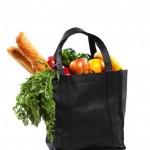
Eating healthy foods is important for your diabetes control and your health. But you might feel it costs too much to eat the right foods these days. The good news is you can eat smart without breaking your budget. BEFORE YOU SHOP Do your homework first. Decide how much money you have to spend and ?how you’ll plan your ?meals for the week. ?Here are some tips to ?get you started: Map out your meals for the week. ?What meals will you cook at home, and how many meals, if any, will you eat away from home? Think about quick and easy ways to save money, too. For example, if you tend to grab a muffin or bagel on ?the way to work, enjoy a ?bowl of high-fiber cereal ?at home, or bring a whole-?wheat English muffin with ?some peanut butter or a ?boiled egg to work with you. ?You’ll save money. Make your list ?and check it twice.?Once you’ve planned your menu for the week, make ?your shopping list. This list ?will save you time and help keep you from buying items that you may not really need. AT THE STORE Now that you have your shopping list, it’s time to go. Use these tips to become a smart shopper: Buy Whole. ?The more “whole” foods you buy, the less room you will have in your shopping cart for processed, canned and packaged foods. Buy In Season. ?Sure, you can get blueberries and asparagus all year round, but you’ll pay a price. Careful shoppers know to buy fruits and vegetables in season. Skip The Bagged And Washed Produce. ?Pre-washed and pre-cut fruits, vegetables and salad greens do save you time. The trade-off is that they cost more and you get less for your dollar. Prep and bag your produce right when you get home from the store to make your own low-cost, ready-to-eat items. Buy By The Bag, ?Not The Piece. ?Another tip for saving money is to buy in bulk; that means buying a bag of oranges or potatoes instead of buying them one by one. Chill Out And Buy Frozen. Frozen fruits and vegetables can be just as healthy, but less costly, as fresh fruits and vegetables—as long as they’re not packed in heavy syrup, butter or cheese sauces. Try Store Brands. ?Store brands can save you lots of money over the course of the year. Costco carries ?the Kirkland line ?of high quality ?food products at great prices. Compare Costs. Read the unit price of an item on the shelf tag to help you compare costs between brands and different-sized products. The unit price tells you how much the food costs per ounce. To get the price per ounce yourself, take the price and divide it by the total number of ounces in the package. BARGAIN FOODS Certain foods are great for you and won’t leave a dent in your wallet. Here are some good foods to make a regular part of your eating plan: Brown Rice Brown rice costs about the same as white rice, but has a lot more to offer. Two-thirds of a cup of rice (two carbohydrate choices) contains 2.5 grams of fiber, while two-thirds of a cup of white rice has less than half a gram of fiber. The fiber in brown rice may help lower cholesterol levels, too. Canned Fish ?Fatty fish is great for heart health. But fresh fish can cost a lot. Luckily, canned chunk light tuna also contains heart-healthy omega-3 fatty acids, is lower in mercury than canned albacore tuna and costs less, too. Also, try canned salmon and sardines. Buy canned fish packed in water, not oil, to keep the calories low and prevent a large amount of the fish’s omega-3 fatty acids from going down the drain. Canned fish works well in sandwiches, ?salads and ?casseroles. Dried Beans, ?Peas and Lentils ?Some of the cheapest (yet healthiest) foods around, dried beans and lentils (often called legumes) are rich in fiber, protein, vitamins and minerals and are low on fat. There are so many types to choose from, too: black beans, pinto beans, kidney beans, chick peas, yellow peas and lentils are just a few you can try. Sweet Potatoes ?Sweet potatoes aren’t just for the holidays. Have a sweet potato instead of your usual white potato. They are a great source of beta carotene, vitamin C and fiber. By Amy Campbell MS, RD, LDN, CDE
The post Eating Well and Spending Less appeared first on Summer 2015 Issue | CDiabetes Online Magazine.
]]>
Eating healthy foods is important for your diabetes control and your health. But you might feel it costs too much to eat the right foods these days. The good news is you can eat smart without breaking your budget.
BEFORE YOU SHOP
Do your homework first. Decide how much money you have to spend and ?how you’ll plan your ?meals for the week. ?Here are some tips to ?get you started:
- Map out your meals for the week. ?What meals will you cook at home, and how many meals, if any, will you eat away from home? Think about quick and easy ways to save money, too. For example, if you tend to grab a muffin or bagel on ?the way to work, enjoy a ?bowl of high-fiber cereal ?at home, or bring a whole-?wheat English muffin with ?some peanut butter or a ?boiled egg to work with you. ?You’ll save money.
- Make your list ?and check it twice.?Once you’ve planned your menu for the week, make ?your shopping list. This list ?will save you time and help keep you from buying items that you may not really need.
AT THE STORE
Now that you have your shopping list, it’s time to go. Use these tips to become a smart shopper:
- Buy Whole. ?The more “whole” foods you buy, the less room you will have in your shopping cart for processed, canned and packaged foods.
- Buy In Season. ?Sure, you can get blueberries and asparagus all year round, but you’ll pay a price. Careful shoppers know to buy fruits and vegetables in season.
- Skip The Bagged And Washed Produce. ?Pre-washed and pre-cut fruits, vegetables and salad greens do save you time. The trade-off is that they cost more and you get less for your dollar. Prep and bag your produce right when you get home from the store to make your own low-cost, ready-to-eat items.
- Buy By The Bag, ?Not The Piece. ?Another tip for saving money is to buy in bulk; that means buying a bag of oranges or potatoes instead of buying them one by one.
- Chill Out And Buy Frozen. Frozen fruits and vegetables can be just as healthy, but less costly, as fresh fruits and vegetables—as long as they’re not packed in heavy syrup, butter or cheese sauces.
- Try Store Brands. ?Store brands can save you lots of money over the course of the year. Costco carries ?the Kirkland line ?of high quality ?food products at great prices.
- Compare Costs. Read the unit price of an item on the shelf tag to help you compare costs between brands and different-sized products. The unit price tells you how much the food costs per ounce. To get the price per ounce yourself, take the price and divide it by the total number of ounces in the package.
BARGAIN FOODS
Certain foods are great for you and won’t leave a dent in your wallet. Here are some good foods to make a regular part of your eating plan:
- Brown Rice
Brown rice costs about the same as white rice, but has a lot more to offer. Two-thirds of a cup of rice (two carbohydrate choices) contains 2.5 grams of fiber, while two-thirds of a cup of white rice has less than half a gram of fiber. The fiber in brown rice may help lower cholesterol levels, too.
- Canned Fish
?Fatty fish is great for heart health. But fresh fish can cost a lot. Luckily, canned chunk light tuna also contains heart-healthy omega-3 fatty acids, is lower in mercury than canned albacore tuna and costs less, too. Also, try canned salmon and sardines. Buy canned fish packed in water, not oil, to keep the calories low and prevent a large amount of the fish’s omega-3 fatty acids from going down the drain. Canned fish works well in sandwiches, ?salads and ?casseroles.
- Dried Beans, ?Peas and Lentils
?Some of the cheapest (yet healthiest) foods around, dried beans and lentils (often called legumes) are rich in fiber, protein, vitamins and minerals and are low on fat. There are so many types to choose from, too: black beans, pinto beans, kidney beans, chick peas, yellow peas and lentils are just a few you can try.
- Sweet Potatoes
?Sweet potatoes aren’t just for the holidays. Have a sweet potato instead of your usual white potato. They are a great source of beta carotene, vitamin C and fiber.
By Amy Campbell MS, RD, LDN, CDE
The post Eating Well and Spending Less appeared first on Summer 2015 Issue | CDiabetes Online Magazine.
]]>
Diabetes and food do a unique dance. You need to eat a variety of foods to stay healthy, but too much of some foods can lead to weight gain and can affect your diabetes control. Your diabetes food plan should fit your nutritional needs, daily routine, eating habits, food likes, and blood glucose and diabetes goals. You and your diabetes care team should find the method that best helps you plan meals, stay healthy, and maintain proper weight and blood fat (lipid) goals. And if one approach doesn’t work for you, try another. There are many diabetes meal planning methods to choose from. Which one is best for you? Here are three popular methods ?to consider. 1. The Plate Method This simple meal planning method is easy to use at home and when you eat out. For breakfast Draw a pretend line down the middle of your 9-inch plate. Place a small carbohydrate serving of whole-grain toast or cereal on one side. Split the other half of the plate into two sections. Fill one with a meat or meat substitute, such as an egg, egg whites, low-fat cottage cheese or Canadian bacon. Fill the other part with a small piece of fruit or enjoy ? cup of juice. If you wish, you can also have a cup of skim or low-fat milk, sugar-free hot chocolate or light yogurt. If you use a bowl at breakfast, keep your portions small. For lunch and dinner Again, draw a pretend line down the middle of a 9-inch plate. Fill one side with non-starchy (low-carb) vegetables, such as green beans, zucchini, cauliflower, spinach, summer squash, Brussels sprouts, carrots, broccoli, peppers, tomatoes, cucumbers, celery and lettuce. Then, split the other side into two equal parts. Fill one part with carbohydrate-rich foods, such as baked or sweet potato, corn, peas, chickpeas, lentils, kidney beans, or whole-grain rice, pasta or bread. The last part of your plate should be filled with protein foods, such as skinless chicken or turkey, fish, eggs, lean beef or pork, low-fat cheese, low-fat cottage cheese or tofu. To round out your meal, add a small fruit serving (? cup or one small piece of fruit) and 8 ounces of skim or low-fat milk or 1 cup of light yogurt. 2. Carb Counting When you know how many carbohydrates (carbs) are in each serving of food, you ?can eat the amount that will help you maintain good glucose control. Foods that have carbohydrates will raise your blood glucose level. Experts suggest that people with diabetes eat at least 130 grams of carbohydrates each day to stay healthy. Many people eat 45–60 grams of carbs at each meal and 10–15 grams for each snack. A dietitian can help you use this method to plan your meals. If you use insulin, your dietitian can also help you use your carbohydrate totals to figure out how much insulin to take at mealtimes. 3. Glycemic Index This tool can help you get the most out of your diabetes meal plan. The Glycemic Index (GI) ranks carbohydrate foods by the effect they have on the body’s glucose level. Foods are listed as having a high, medium or low GI. Low foods have the smallest effect and high foods have the greatest. The list is not perfect but can help you make better food choices when you plan your meals. For example, if you want to eat a fruit but don’t want your glucose level to jump too high, choose one that has a low or medium GI. These meal-planning methods offer you ways to eat well while at home and away. Meet with a dietitian to learn the best way to use them. By Janis Roszler MSFT, RD, CDE, LD/N
The post Diabetes Meal Planning: Which Method is Best for You? appeared first on Summer 2015 Issue | CDiabetes Online Magazine.
]]>
Diabetes and food do a unique dance. You need to eat a variety of foods to stay healthy, but too much of some foods can lead to weight gain and can affect your diabetes control. Your diabetes food plan should fit your nutritional needs, daily routine, eating habits, food likes, and blood glucose and diabetes goals. You and your diabetes care team should find the method that best helps you plan meals, stay healthy, and maintain proper weight and blood fat (lipid) goals. And if one approach doesn’t work for you, try another.
There are many diabetes meal planning methods to choose from. Which one is best for you? Here are three popular methods ?to consider.
 1. The Plate Method
1. The Plate Method
This simple meal planning method is easy to use at home and when you eat out.
For breakfast
Draw a pretend line down the middle of your 9-inch plate. Place a small carbohydrate serving of whole-grain toast or cereal on one side. Split the other half of the plate into two sections. Fill one with a meat or meat substitute, such as an egg, egg whites, low-fat cottage cheese or Canadian bacon. Fill the other part with a small piece of fruit or enjoy ? cup of juice. If you wish, you can also have a cup of skim or low-fat milk, sugar-free hot chocolate or light yogurt. If you use a bowl at breakfast, keep your portions small.
For lunch and dinner
Again, draw a pretend line down the middle of a 9-inch plate. Fill one side with non-starchy (low-carb) vegetables, such as green beans, zucchini, cauliflower, spinach, summer squash, Brussels sprouts, carrots, broccoli, peppers, tomatoes, cucumbers, celery and lettuce. Then, split the other side into two equal parts. Fill one part with carbohydrate-rich foods, such as baked or sweet potato, corn, peas, chickpeas, lentils, kidney beans, or whole-grain rice, pasta or bread. The last part of your plate should be filled with protein foods, such as skinless chicken or turkey, fish, eggs, lean beef or pork, low-fat cheese, low-fat cottage cheese or tofu. To round out your meal, add a small fruit serving (? cup or one small piece of fruit) and 8 ounces of skim or low-fat milk or 1 cup of light yogurt.
2. Carb Counting
When you know how many carbohydrates (carbs) are in each serving of food, you ?can eat the amount that will help you maintain good glucose control.
Foods that have carbohydrates will raise your blood glucose level. Experts suggest that people with diabetes eat at least 130 grams of carbohydrates each day to stay healthy. Many people eat 45–60 grams of carbs at each meal and 10–15 grams for each snack. A dietitian can help you use this method to plan your meals. If you use insulin, your dietitian can also help you use your carbohydrate totals to figure out how much insulin to take at mealtimes.
3. Glycemic Index
This tool can help you get the most out of your diabetes meal plan.
The Glycemic Index (GI) ranks carbohydrate foods by the effect they have on the body’s glucose level. Foods are listed as having a high, medium or low GI. Low foods have the smallest effect and high foods have the greatest. The list is not perfect but can help you make better food choices when you plan your meals. For example, if you want to eat a fruit but don’t want your glucose level to jump too high, choose one that has a low or medium GI.
These meal-planning methods offer you ways to eat well while at home and away. Meet with a dietitian to learn the best way to use them.
By Janis Roszler MSFT, RD, CDE, LD/N
The post Diabetes Meal Planning: Which Method is Best for You? appeared first on Summer 2015 Issue | CDiabetes Online Magazine.
]]>
Keeping your blood glucose levels under control can be hard to do when you’re busy, especially if you count carbs as part of your balanced meal plan. You may not always have time to count carbs when you have to grab something fast at work, or while running errands. At these times, meal replacements may be just the help you need to keep your blood glucose levels on track. What is a meal replacement? The most common types of meal replacement are protein bars and shakes. Over the years, these products have become much better tasting. You can get them in a variety of flavors and forms. Products that are 150 calories or less are considered a snack replacement, while those that have 200 calories or more are considered full meal replacements. Snack replacements can be paired with a veggie or fruit serving to create a small meal. Most meal replacements are low in carbohydrates, and have a healthy amount of fiber and protein. How can meal replacements improve my health? One of the biggest challenges to leading a healthy lifestyle is not having enough time to make healthy meals and snacks. Meal replacements, which usually require little to no prep time, can provide you with plenty of protein, fat, carbohydrates, and calories to keep you full for a few hours. Having a healthy balance of fiber-rich carbohydrate and protein every three to four hours can help prevent blood glucose highs and lows, and stop you from craving unhealthy foods. Over time, this can help you reach and maintain a healthy weight. If you are having a hard time keeping up a healthy lifestyle, meal replacements may help you get back on track. Here are some ways you can add meal replacements to your day: Keep a meal replacement on hand to prevent overeating. Having a filling meal replacement when you are invited on a last minute outing with friends, or when you are craving sweets, can help you avoid giving in to temptation. Keep a protein bar in your bag. Whether you’re running late, stuck in traffic, or have errands to run and not enough time, a protein bar is a great way to keep your blood glucose balanced. Glucerna makes chocolate chip and peanut chocolate chip meal replacement bars, as well as 80-calorie snack bars in oatmeal raisin, chocolate caramel, and chocolate peanut flavors. The best part? They only have about 11 carbohydrates per serving. Try a protein-based shake or fruit drink for a quick and refreshing breakfast. Meal replacement shakes and drinks are great breakfast substitutes for those who usually skip breakfast. Glucerna meal replacement shakes are made just for people with diabetes, and come in delicious flavors like vanilla, chocolate, strawberry, and butter pecan. Glucerna shakes are 8 ounces each, and have 190 calories, 23 grams of carbs, 3 grams of fiber, and 10 grams of protein. Glucerna also makes Hunger Smart brand shakes in vanilla and chocolate, which are higher in protein and only 140 calories. By Staci Gulbin, MS, MEd, RD, LDN
The post Meal Replacements Can Help You Manage Diabetes on the Go appeared first on Summer 2015 Issue | CDiabetes Online Magazine.
]]>
Keeping your blood glucose levels under control can be hard to do when you’re busy, especially if you count carbs as part of your balanced meal plan. You may not always have time to count carbs when you have to grab something fast at work, or while running errands. At these times, meal replacements may be just the help you need to keep your blood glucose levels on track.
What is a meal replacement?
The most common types of meal replacement are protein bars and shakes. Over the years, these products have become much better tasting. You can get them in a variety of flavors and forms. Products that are 150 calories or less are considered a snack replacement, while those that have 200 calories or more are considered full meal replacements. Snack replacements can be paired with a veggie or fruit serving to create a small meal. Most meal replacements are low in carbohydrates, and have a healthy amount of fiber and protein.
How can meal replacements improve my health?
One of the biggest challenges to leading a healthy lifestyle is not having enough time to make healthy meals and snacks. Meal replacements, which usually require little to no prep time, can provide you with plenty of protein, fat, carbohydrates, and calories to keep you full for a few hours. Having a healthy balance of fiber-rich carbohydrate and protein every three to four hours can help prevent blood glucose highs and lows, and stop you from craving unhealthy foods. Over time, this can help you reach and maintain a healthy weight.
If you are having a hard time keeping up a healthy lifestyle, meal replacements may help you get back on track. Here are some ways you can add meal replacements to your day:
- Keep a meal replacement on hand to prevent overeating. Having a filling meal replacement when you are invited on a last minute outing with friends, or when you are craving sweets, can help you avoid giving in to temptation.
- Keep a protein bar in your bag. Whether you’re running late, stuck in traffic, or have errands to run and not enough time, a protein bar is a great way to keep your blood glucose balanced. Glucerna makes chocolate chip and peanut chocolate chip meal replacement bars, as well as 80-calorie snack bars in oatmeal raisin, chocolate caramel, and chocolate peanut flavors. The best part? They only have about 11 carbohydrates per serving.
- Try a protein-based shake or fruit drink for a quick and refreshing breakfast. Meal replacement shakes and drinks are great breakfast substitutes for those who usually skip breakfast. Glucerna meal replacement shakes are made just for people with diabetes, and come in delicious flavors like vanilla, chocolate, strawberry, and butter pecan. Glucerna shakes are 8 ounces each, and have 190 calories, 23 grams of carbs, 3 grams of fiber, and 10 grams of protein. Glucerna also makes Hunger Smart brand shakes in vanilla and chocolate, which are higher in protein and only 140 calories.
By Staci Gulbin, MS, MEd, RD, LDN
The post Meal Replacements Can Help You Manage Diabetes on the Go appeared first on Summer 2015 Issue | CDiabetes Online Magazine.
]]>
You may have heard about recent studies showing that people who drink diet soft drinks have a higher risk for diabetes, high blood pressure, heart attacks and strokes than those who do not drink diet drinks. But in fact, researchers have not been able to say that the diet drinks are to blame. Most of those studies are observational, meaning they simply report what they observe. Observational studies are not designed to determine cause and effect. That requires a different kind of study. In addition, a recent study showed other differences between people who drank diet sodas and those who drank regular sodas. Overall diet, or food intake, is one important difference. Diet Soda Study The most recent study to look at diet sodas followed more than 4,000 people for 20 years who were between the ages of 18 and 30 when the study began. The researchers measured how many people got metabolic syndrome after 20 years. Group 1.? The group with the highest risk for metabolic syndrome (32%) regularly drank diet soda and ate a typical Western diet high in meat, processed foods and sugar. Group 2.? The group that regularly drank diet sodas and ate a healthier diet that was rich in fruits, vegetables, whole grains and fish had a slightly higher rate of metabolic syndrome (20%). Group 3.? The group that had the lowest risk for metabolic syndrome drank no diet soda but ate a healthy diet (18%). Study Conclusion Researchers found that overall diet is what matters, and the effect of diet soda is not fully known. There are some studies in animals showing that artificial sweeteners can increase appetite and food intake, but it is not known if these same effects occur in people. Other studies have shown similar results and seem to confirm that one’s overall food intake can affect the risk of developing both metabolic syndrome and type 2 diabetes. Supporting this view is another study showing that people who ate a greater quantity of vegetables and a wide variety of fruits and vegetables had the lowest risk for developing type 2 diabetes. Metabolic syndrome ?is a group of risk factors for heart disease and diabetes, and includes too much weight around the waist, high cholesterol, high blood pressure and high blood glucose levels. ?Diet Soda Study Take-Home Message Think about how diet soda affects your appetite and desire for sweets. If you think diet sodas make you feel hungry or lead to cravings for sweet foods, try switching to water, unsweetened ice tea or flavored seltzer water instead. Eat a healthy diet, high in vegetables and a variety of fruits, whole grains and fish, as well as less meat, processed foods and sugar. These suggestions apply whether? ?you are trying to prevent type 2 diabetes or have type 2 diabetes already. Because people with diabetes are at risk for high blood pressure and heart disease, eating a healthy diet is a sound choice for the long term. It will help to keep your blood glucose on target and will help prevent the long-term complications of diabetes. By Martha Funnell MS, RN, CDE
The post Diet Soda and Diabetes appeared first on Summer 2015 Issue | CDiabetes Online Magazine.
]]>
You may have heard about recent studies showing that people who drink diet soft drinks have a higher risk for diabetes, high blood pressure, heart attacks and strokes than those who do not drink diet drinks. But in fact, researchers have not been able to say that the diet drinks are to blame. Most of those studies are observational, meaning they simply report what they observe. Observational studies are not designed to determine cause and effect. That requires a different kind of study.
In addition, a recent study showed other differences between people who drank diet sodas and those who drank regular sodas. Overall diet, or food intake, is one important difference.
Diet Soda Study
The most recent study to look at diet sodas followed more than 4,000 people for 20 years who were between the ages of 18 and 30 when the study began. The researchers measured how many people got metabolic syndrome after 20 years.
- Group 1.? The group with the highest risk for metabolic syndrome (32%) regularly drank diet soda and ate a typical Western diet high in meat, processed foods and sugar.
- Group 2.? The group that regularly drank diet sodas and ate a healthier diet that was rich in fruits, vegetables, whole grains and fish had a slightly higher rate of metabolic syndrome (20%).
- Group 3.? The group that had the lowest risk for metabolic syndrome drank no diet soda but ate a healthy diet (18%).
Study Conclusion
Researchers found that overall diet is what matters, and the effect of diet soda is not fully known.
There are some studies in animals showing that artificial sweeteners can increase appetite and food intake, but it is not known if these same effects occur in people.
Other studies have shown similar results and seem to confirm that one’s overall food intake can affect the risk of developing both metabolic syndrome and type 2 diabetes. Supporting this view is another study showing that people who ate a greater quantity of vegetables and a wide variety of fruits and vegetables had the lowest risk for developing type 2 diabetes.
Metabolic syndrome ?is a group of risk factors for heart disease and diabetes, and includes too much weight around the waist, high cholesterol, high blood pressure and high blood glucose levels.
?Diet Soda Study Take-Home Message
Think about how diet soda affects your appetite and desire for sweets. If you think diet sodas make you feel hungry or lead to cravings for sweet foods, try switching to water, unsweetened ice tea or flavored seltzer water instead.
Eat a healthy diet, high in vegetables and a variety of fruits, whole grains and fish, as well as less meat, processed foods and sugar. These suggestions apply whether? ?you are trying to prevent type 2 diabetes or have type 2 diabetes already. Because people with diabetes are at risk for high blood pressure and heart disease, eating a healthy diet is a sound choice for the long term. It will help to keep your blood glucose on target and will help prevent the long-term complications of diabetes.
By Martha Funnell MS, RN, CDE
The post Diet Soda and Diabetes appeared first on Summer 2015 Issue | CDiabetes Online Magazine.
]]>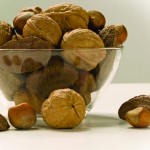
Nuts, berries and oils seem to be in the news a lot lately, thanks to the health benefits that they provide. Here is a quick review of each of those foods, along with some new ways they can help your diabetes control. Nuts Walnuts, almonds, hazelnuts and most other types of nuts are great for your heart. They help lower LDL (bad) cholesterol levels, prevent harmful heart rhythms from forming and contain L-arginine, which can help artery walls “relax.” That can help prevent clogged arteries, chest pain and possibly ?heart disease. What’s new? Nuts to the rescue. A recent Canadian study found that nuts not only help improve cholesterol levels, they can also help improve blood glucose levels. If you have type 2 diabetes, you know that if you eat too many carbohydrate-rich foods— pasta, rice, bread, cookies, potatoes, corn, peas, milk, fruit or fruit juice—your blood glucose will go too high. In that study, researchers mixed unsalted almonds, peanuts, cashews, macadamia nuts, pistachios, hazelnuts, pecans and walnuts together. The subjects, who ate 2 ounces of the nut mixture each day in place of some of their carbohydrates, enjoyed a nice drop in their A1C. The A1C is a blood test that tells you how well your diabetes has been controlled for the past three months. People with diabetes have a lower risk of complications if they keep their A1C level below 7 percent. Note: While eating more nuts can be helpful, don’t overdo it. Nuts are high in fat and calories and can cause you to gain weight if you eat too many of them. Nuts, berries and oils can help you better manage your diabetes and lower your risk of health problems. Reap their benefits by making them a regular part of your eating plan. Berries Berries, such as straw-berries, blueberries, raspberries and cranberries, are rich in antioxidants, substances that fight damage caused by toxic byproducts (free radicals). Some of these byproducts come from natural cell processes in the body, while others come from environmental sources, such as cigarette smoke, pesticides and sunlight. What’s new? If you have type 2 diabetes and eat an antioxidant-rich diet, you may find it easier to keep your blood glucose level in a healthy range. That’s because the antioxidants can improve your body’s response to insulin. Experts in Italy who observed that benefit also believe that an antioxidant-rich diet can also help metformin, a common diabetes medicine, work better in the body. They suggest that people with diabetes eat five servings of fruits and vegetables daily to help improve their insulin levels. In addition to berries, carrots, capers, tomatoes, orange juice and tea are also good sources of antioxidants. Note: Fruits and fruit juices will raise your blood glucose level if eaten in excess. If you add them to your diet, count the carbs and check your blood glucose regularly. Adjust your intake of fruit and fruit juices, as needed, based on your blood ?glucose response. Oils There are four types of fats: two that harm and two that help. The harmful ones are saturated fats and trans fats. Saturated fats, found, for example, in red meat and high-fat dairy products, raise your risk of getting heart disease and type 2 diabetes. Trans fats are often found in stick margarines, shortenings and baked goods. A quick glance at a food’s Nutrition Facts label will tell you if a product contains that type of fat. Trans fats should be limited, as they raise the body’s LDL cholesterol level and increase the risk of heart disease. Try to choose foods with 0 grams of trans fat per serving. Polyunsaturated and mono-unsaturated oils are the healthy oils. They are found in nuts, fish and vegetable oils, such as olive, safflower, canola and sunflower oils. They don’t seem to raise LDL cholesterol and may even help bring it down. When you cook at home or dress your salads, use these healthier oils. What’s new? Fish oils are great for your heart, but did you know that they can also help keep your mouth healthy? People with diabetes have a higher risk of gum disease, which can make it harder for them to control their blood glucose level. Fish oils, found in salmon, sardines, mackerel, swordfish and other fatty fish, may help prevent gum disease. The oils that seemed to offer the most help are the omega-3 fatty acids DHA and EPA. Experts don’t know exactly how much fish will help, but they suggest that people who have diabetes eat fatty fish at least twice ?a week. Note: Be sure to limit the amount of oil you use. All oils are high in fat and calories and may lead to weight gain if you use ?too much. By Johanna Burani MS, RD, CDE
The post Are You Nuts About Nuts, Berries and Oils? appeared first on Summer 2015 Issue | CDiabetes Online Magazine.
]]>
Nuts, berries and oils seem to be in the news a lot lately, thanks to the health benefits that they provide. Here is a quick review of each of those foods, along with some new ways they can help your diabetes control.
Nuts
Walnuts, almonds, hazelnuts and most other types of nuts are great for your heart. They help lower LDL (bad) cholesterol levels, prevent harmful heart rhythms from forming and contain L-arginine, which can help artery walls “relax.” That can help prevent clogged arteries, chest pain and possibly ?heart disease.
What’s new?
 Nuts to the rescue. A recent Canadian study found that nuts not only help improve cholesterol levels, they can also help improve blood glucose levels. If you have type 2 diabetes, you know that if you eat too many carbohydrate-rich foods— pasta, rice, bread, cookies, potatoes, corn, peas, milk, fruit or fruit juice—your blood glucose will go too high.
Nuts to the rescue. A recent Canadian study found that nuts not only help improve cholesterol levels, they can also help improve blood glucose levels. If you have type 2 diabetes, you know that if you eat too many carbohydrate-rich foods— pasta, rice, bread, cookies, potatoes, corn, peas, milk, fruit or fruit juice—your blood glucose will go too high.
In that study, researchers mixed unsalted almonds, peanuts, cashews, macadamia nuts, pistachios, hazelnuts, pecans and walnuts together. The subjects, who ate 2 ounces of the nut mixture each day in place of some of their carbohydrates, enjoyed a nice drop in their A1C. The A1C is a blood test that tells you how well your diabetes has been controlled for the past three months. People with diabetes have a lower risk of complications if they keep their A1C level below 7 percent.
Note: While eating more nuts can be helpful, don’t overdo it. Nuts are high in fat and calories and can cause you to gain weight if you eat too many of them.
Nuts, berries and oils can help you better manage your diabetes and lower your risk of health problems. Reap their benefits by making them a regular part of your eating plan.

Berries
Berries, such as straw-berries, blueberries, raspberries and cranberries, are rich in antioxidants, substances that fight damage caused by toxic byproducts (free radicals). Some of these byproducts come from natural cell processes in the body, while others come from environmental sources, such as cigarette smoke, pesticides and sunlight.
What’s new?
If you have type 2 diabetes and eat an antioxidant-rich diet, you may find it easier to keep your blood glucose level in a healthy range. That’s because the antioxidants can improve your body’s response to insulin. Experts in Italy who observed that benefit also believe that an antioxidant-rich diet can also help metformin, a common diabetes medicine, work better in the body. They suggest that people with diabetes eat five servings of fruits and vegetables daily to help improve their insulin levels. In addition to berries, carrots, capers, tomatoes, orange juice and tea are also good sources of antioxidants.
Note: Fruits and fruit juices will raise your blood glucose level if eaten in excess. If you add them to your diet, count the carbs and check your blood glucose regularly. Adjust your intake of fruit and fruit juices, as needed, based on your blood ?glucose response.
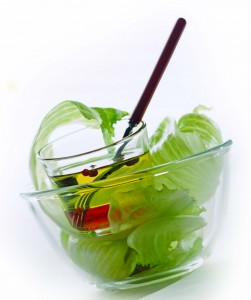
Oils
There are four types of fats: two that harm and two that help. The harmful ones are saturated fats and trans fats. Saturated fats, found, for example, in red meat and high-fat dairy products, raise your risk of getting heart disease and type 2 diabetes. Trans fats are often found in stick margarines, shortenings and baked goods. A quick glance at a food’s Nutrition Facts label will tell you if a product contains that type of fat. Trans fats should be limited, as they raise the body’s LDL cholesterol level and increase the risk of heart disease. Try to choose foods with 0 grams of trans fat per serving.
Polyunsaturated and mono-unsaturated oils are the healthy oils. They are found in nuts, fish and vegetable oils, such as olive, safflower, canola and sunflower oils. They don’t seem to raise LDL cholesterol and may even help bring it down. When you cook at home or dress your salads, use these healthier oils.
What’s new?
Fish oils are great for your heart, but did you know that they can also help keep your mouth healthy? People with diabetes have a higher risk of gum disease, which can make it harder for them to control their blood glucose level. Fish oils, found in salmon, sardines, mackerel, swordfish and other fatty fish, may help prevent gum disease. The oils that seemed to offer the most help are the omega-3 fatty acids DHA and EPA. Experts don’t know exactly how much fish will help, but they suggest that people who have diabetes eat fatty fish at least twice ?a week.
Note: Be sure to limit the amount of oil you use. All oils are high in fat and calories and may lead to weight gain if you use ?too much.
By Johanna Burani MS, RD, CDE
The post Are You Nuts About Nuts, Berries and Oils? appeared first on Summer 2015 Issue | CDiabetes Online Magazine.
]]>
A spare tire comes in handy if you have a flat, but who wants one around their middle? Too much belly fat is linked with a number of health problems. Here’s how to tell if you need to trim your waistline and, if so, what you can do. Belly fat ?and your body The fat that surrounds the mid-part of your body tends to wrap itself around your internal organs, too. Belly fat is also called visceral fat, and unlike the fat that lies right under your skin, it’s a more harmful kind of fat. Why too much belly fat can be harmful Studies show that increased belly fat may lead to certain health problems, such as: heart disease type 2 diabetes fatty liver disease breast cancer depression Belly fat can cause areas of your body to become inflamed, which may cause many of the health problems listed above. Belly fat is linked with high bad cholesterol (LDL) and low good cholesterol (HDL). ?It’s also linked to insulin resistance, which means your body starts to ignore the insulin you produce. Insulin resistance can lead to type 2 diabetes. If you already have diabetes, insulin resistance makes it harder for the insulin you make or inject to work well. How to tell One look in the mirror can indicate if you have too much belly fat. Here are some tell-tale signs: Are you shaped like an apple or a pear? If you carry your excess weight around your middle, you are shaped like an apple. If your extra weight is stored below your waist, in the abdomen and buttocks area, you are more like a pear. Those who fall into the apple group have too much belly fat. Is your waist size larger than your hip size? If you’re a woman and your waist size is more than 35 inches around, or if you’re a man and your waist size is more than 40 inches around, you may have too much belly fat. To measure your waist, take a tape measure and wrap it around your waist so that it crosses your navel. Keep the tape measure above your hip bones and don’t suck in your stomach. Or, ask your healthcare provider to measure your waist for you. Is your body mass index (BMI) too high? Many people with a high BMI tend to have too much belly fat. You can figure out your BMI by using a BMI calculator on the Internet, or your provider can calculate it for you. Your BMI tells you where your weight stands in relation to your height. A BMI between 25 and 29.9 puts you in the overweight group, and a BMI above 30 indicates obesity for most people. 10 Ways to Slim Down and Lose That Belly Fat You can get rid of some of your belly fat if you make a few of these lifestyle changes: Get moving. Moving your body is healthy for so many reasons—including shrinking belly fat.? Studies show that people who don’t move see an increase in their belly fat, while those who are active each day lose fat around their middle. Try to be active for at least 30 minutes every day. All activity counts, even as gardening, yard work, housecleaning and walking around the mall. Squeeze in some strength-building exercises a couple of days a week. For example, use small hand weights or climb stairs instead of taking the elevator. Exercises that focus on certain areas, such as sit-ups, can help tighten and tone your muscles, but they won’t get rid of the fat. Eat more whole grains. People who eat more whole grain foods, like whole wheat bread, whole grain pasta and brown rice, tend to have less belly fat than people who eat more refined or white foods. Cut calories. If you weigh too much, slow and steady weight loss can help you lose belly fat.? Try to cut back on portion sizes, as well as high-calorie, fatty foods like fried foods, whole milk, butter and snack foods. Meet with a dietitian to help make an eating plan to lose weight and manage your diabetes at the same time. Be less stressed. It’s easier said than done, but the more stress you have in your life, the bigger your waist may become. That’s because stress tends to raise a hormone called cortisol and this moves fat from other areas of the body to your midsection.? Physical activity, yoga, deep breathing, massage and meditation are great ways to chill out. Stop smoking. You probably know that smoking increases the risk for lung disease, lung cancer and heart disease, but you may not know that smoking can also build up belly fat and lead to insulin resistance. If you smoke, this is another good reason to quit. Bump up your soluble fiber. Soluble fiber is a type of fiber that can help lower cholesterol, blood glucose and even belly fat. Research shows that for every 10 grams of soluble fiber people eat, their belly fat will drop by about 4 percent over five years. Sources of soluble fiber include oatmeal, oat bran, beans, apples, citrus fruits, broccoli and carrots. Get the right amount of sleep. Too little or too much sleep can lead to a tubby tummy. The right amount of sleep for most adults is between six and eight hours each night. Choose healthy fats. Not all fats are bad, and you need good fat for good health.? Go for heart-healthy fats, like olive oil, canola oil and safflower oil. Include nuts, seeds and avocados in your eating plan, too. But watch your portions as all fats, even good ones, are high in calories. Enjoy green tea. If you like tea, try green tea. Ingredients found in green tea may help shrink your waist down to a better size. Avoid high fructose corn syrup. In animal studies, rats that ate high-fructose corn syrup increased their belly fat. Try to stay away from...
The post Belly Fat: How to Lose That Spare Tire appeared first on Summer 2015 Issue | CDiabetes Online Magazine.
]]>
A spare tire comes in handy if you have a flat, but who wants one around their middle? Too much belly fat is linked with a number of health problems. Here’s how to tell if you need to trim your waistline and, if so, what you can do.
Belly fat ?and your body
The fat that surrounds the mid-part of your body tends to wrap itself around your internal organs, too. Belly fat is also called visceral fat, and unlike the fat that lies right under your skin, it’s a more harmful kind of fat.
Why too much belly fat can be harmful
Studies show that increased belly fat may lead to certain health problems, such as:
- heart disease
- type 2 diabetes
- fatty liver disease
- breast cancer
- depression
Belly fat can cause areas of your body to become inflamed, which may cause many of the health problems listed above. Belly fat is linked with high bad cholesterol (LDL) and low good cholesterol (HDL). ?It’s also linked to insulin resistance, which means your body starts to ignore the insulin you produce. Insulin resistance can lead to type 2 diabetes. If you already have diabetes, insulin resistance makes it harder for the insulin you make or inject to work well.
How to tell
One look in the mirror can indicate if you have too much belly fat. Here are some tell-tale signs:
Are you shaped like an apple or a pear? If you carry your excess weight around your middle, you are shaped like an apple. If your extra weight is stored below your waist, in the abdomen and buttocks area, you are more like a pear. Those who fall into the apple group have too much belly fat.
Is your waist size larger than your hip size? If you’re a woman and your waist size is more than 35 inches around, or if you’re a man and your waist size is more than 40 inches around, you may have too much belly fat. To measure your waist, take a tape measure and wrap it around your waist so that it crosses your navel. Keep the tape measure above your hip bones and don’t suck in your stomach. Or, ask your healthcare provider to measure your waist for you.
Is your body mass index (BMI) too high? Many people with a high BMI tend to have too much belly fat. You can figure out your BMI by using a BMI calculator on the Internet, or your provider can calculate it for you.
Your BMI tells you where your weight stands in relation to your height. A BMI between 25 and 29.9 puts you in the overweight group, and a BMI above 30 indicates obesity for most people.
10 Ways to Slim Down and Lose That Belly Fat
You can get rid of some of your belly fat if you make a few of these lifestyle changes:
- Get moving.
Moving your body is healthy for so many reasons—including shrinking belly fat.? Studies show that people who don’t move see an increase in their belly fat, while those who are active each day lose fat around their middle. Try to be active for at least 30 minutes every day. All activity counts, even as gardening, yard work, housecleaning and walking around the mall. Squeeze in some strength-building exercises a couple of days a week. For example, use small hand weights or climb stairs instead of taking the elevator. Exercises that focus on certain areas, such as sit-ups, can help tighten and tone your muscles, but they won’t get rid of the fat.
- Eat more whole grains.
People who eat more whole grain foods, like whole wheat bread, whole grain pasta and brown rice, tend to have less belly fat than people who eat more refined or white foods.
- Cut calories.
If you weigh too much, slow and steady weight loss can help you lose belly fat.? Try to cut back on portion sizes, as well as high-calorie, fatty foods like fried foods, whole milk, butter and snack foods. Meet with a dietitian to help make an eating plan to lose weight and manage your diabetes at the same time.
- Be less stressed.
It’s easier said than done, but the more stress you have in your life, the bigger your waist may become. That’s because stress tends to raise a hormone called cortisol and this moves fat from other areas of the body to your midsection.? Physical activity, yoga, deep breathing, massage and meditation are great ways to chill out.
- Stop smoking.
You probably know that smoking increases the risk for lung disease, lung cancer and heart disease, but you may not know that smoking can also build up belly fat and lead to insulin resistance. If you smoke, this is another good reason to quit.
- Bump up your soluble fiber.
Soluble fiber is a type of fiber that can help lower cholesterol, blood glucose and even belly fat. Research shows that for every 10 grams of soluble fiber people eat, their belly fat will drop by about 4 percent over five years. Sources of soluble fiber include oatmeal, oat bran, beans, apples, citrus fruits, broccoli and carrots.
- Get the right amount of sleep.
Too little or too much sleep can lead to a tubby tummy. The right amount of sleep for most adults is between six and eight hours each night.
- Choose healthy fats.
Not all fats are bad, and you need good fat for good health.? Go for heart-healthy fats, like olive oil, canola oil and safflower oil. Include nuts, seeds and avocados in your eating plan, too. But watch your portions as all fats, even good ones, are high in calories.
- Enjoy green tea.
If you like tea, try green tea. Ingredients found in green tea may help shrink your waist down to a better size.
- Avoid high fructose corn syrup.
In animal studies, rats that ate high-fructose corn syrup increased their belly fat. Try to stay away from drinks, desserts and snack foods with that type of sweetener (look for it on the label).
What Doesn’t Work
Wouldn’t it be great if your extra fat could be sucked away? While liposuction (which does that) is a way to trim those love handles and slim down jiggly thighs, it’s not a smart way to remove belly fat—at least in the long run.? Studies show that belly fat can increase after people have liposuction in their stomach area.? Experts aren’t sure why, but they think that after liposuction fat moves from other parts of the body back into the abdomen.
By Amy Campbell MS, RD, LDN, CDE
The post Belly Fat: How to Lose That Spare Tire appeared first on Summer 2015 Issue | CDiabetes Online Magazine.
]]>
